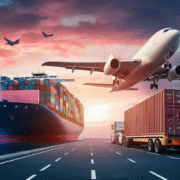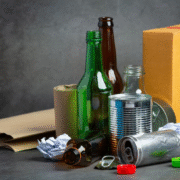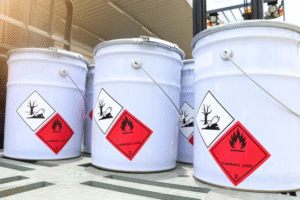Air vs. Sea Freight: 5 Key Differences You Need to Know
Shipping goods across countries isn’t just about picking the cheapest or fastest option.
Choosing between air vs. sea freight is important. As this can affect your costs, timelines, and how well your goods are handled. If you pick the wrong method, you could spend more, miss parcel deadlines, and even have to face damaged goods.
That is why it is important to determine the apparent differences between the two.
Since its inception in 2015, Mass Shipping Line (MSL) has been providing ways to help businesses ship smarter. Our company has offices in both Dubai and Lahore, and we specialise in providing full freight forwarding services, including air cargo services, sea freight solutions, and customs clearance services. Thus, if you need to transport electronics, large machinery, or any dangerous goods, MSL can handle it.
Here are 5 key differences between air and sea freight that this blog will look at. You will learn which one to use when, depending on speed, cost, type of cargo to be conveyed, and the environment where the goods are to be conveyed. By the end, you’ll be able to choose the right shipping method for your business with confidence.
Let’s get into it.
5 Key Differences in Air Freight Vs. Sea Freight
1. Speed and Transit Time

No other shipping option can achieve as much speed as air freight shipping.
While sea freight can take anywhere from 20 to 45 days, air shipments usually arrive in 3 to 7 days, depending on the destination.
It becomes very important, especially when handling products that are sensitive to time, such as electronics, drugs, and perishable items. For instance, if you are running an e-commerce store or selling pharmaceutical products, then delays can cost you a lot of money or ruin your products.
Conversely, sea freight is more appropriate for shipments that can afford to be delayed for a few days when in transit. Bulk items like furniture, raw materials, or industrial equipment usually don’t need to arrive quickly, they just need to get there safely and at a lower cost.
Mass Shipping Line (MSL) handles both fast and scheduled shipments. We also manage project cargo handling and offer container tracking, thus enabling a client to know the location of their shipment even with a tight deadline.
So if your delivery needs to be fast, air freight is the way to go. If you have time, sea freight might save you money.
2. Cost and other expenses
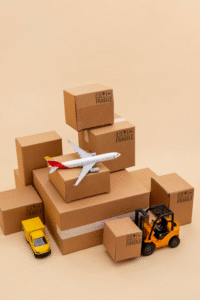
The mostly crucial factor that keeps people choosing between air vs. sea freight is cost. If it is light but precious cargo which includes phones, documents, or medical equipment, for it will cost more to do, then air freight is appropriate. However, if you are dealing with large or otherwise dense items, sea freight could be much cheaper than the other option.
Here is how it works:
Air freight is priced based on chargeable weight, which includes size and weight. It also includes other fees like fuel surcharges, airport handling, and security. Sea freight, on the other hand, is mostly priced by container (FCL or LCL), which makes it more cost-friendly for large volumes.
However, do not forget this — the total cost is not only about transport.
Some of the other costs include the port fees, packaging, logistics transportation, and warehousing and storage. Air freight can cost more than other methods at the initial stages, but you will be spared from extra costs like late delivery of goods or damaged products.
At MSL Shipping, we offer both freight delivery and freight logistics options that suit different budgets.
Our company is a logistics company provider and we know that every company does not require the same service. We enable customer to plan their shipment to optimize both time and cost from simply a startup in Pakistan to a manufacturer in UAE.
In cases where the pricing is a concern and the items being transported are either very bulky or in large quantities, sea freight is often preferred. For smaller, urgent, or high-value items, air is worth the extra cost.
3. Cargo Type and Size

Another big difference in the air vs. sea freight debate is what you’re shipping.
Air freight shipping works best for lightweight, high-value, or time-sensitive cargo, such as:
- Electronics and small gadgets
- Fashion and retail products
- Medical equipment or pharmaceutical items
- Urgent business documents or samples
Sea freight, on the other hand, is ideal for large, bulky, or heavy shipments, including:
- Furniture and home goods
- Vehicles and auto parts
- Industrial equipment or raw materials
- Project cargo, like heavy machinery or construction tools
At Mass Shipping Line (MSL), we handle everything from air cargo services for delicate items to sea freight solutions for oversized cargo. We also offer dangerous goods freight, which requires strict packaging, documentation, and handling when being transported via air or sea.
Whether you need help with inland transport, logistics warehouse storage, or specific freight shipping services, our team finds the best fit for your shipment.
4. Environmental Impact
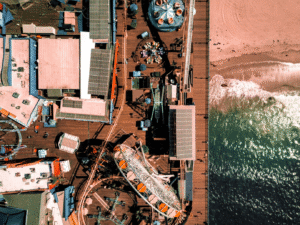
Regarding the impact on the environment, sea logistics are considerably friendlier than air logistics.
Air freight has a higher emission per tonne/kilometre of freight as compared with road transport. That is because the airplanes have a very high intensity of fuel consumption rate, in fact, even for small amounts of loads. Air freight is fast, but it is not the most suitable mode of transport when it comes to emissions reduction for businesses.
Although, sea freight takes longer time than other modes of transport, it is environmentally friendly as it gives lesser CO₂ emission per ton. Ships can transport significant quantities of goods in one shipment thus diluting the contamination level. When planning for the shipment of goods more frequently and looking for a sustainable means, ocean freight is normally the most suitable one.
At Mass Shipping Line (MSL), we care about more than just delivery times. We work with clients to plan shipments in a way that meets both business needs and sustainability goals. Whether you’re shipping by air or sea, our team can help you reduce waste, choose efficient shipping routes, and manage your carbon impact.
To put it simply:
- Choose air when you need speed and are okay with higher emissions.
- Choose the sea when you want to lower your carbon footprint and have more time.
5. Reliability and Flexibility
Reliability and flexibility can make or break your supply chain, and both air and sea freight have their pros and cons.
Air freight is known for its regularity and rapid transit times. Most routes have daily flights, which means that you can ship your goods on a moment’s notice. However, air shipments can be affected by weather disruptions, airport congestion, and security delays, especially during peak seasons.
Sea freight is more consistent in terms of availability but may not have a high turnaround rate. Owing to this, it can take several days to transport a missed vessel. There are also external factors such as congestion in the port, customs and delayed or changed voyages of the vessel that may impact on delivery time.
In case of Mass Shipping Line (MSL), you are not taken by surprise with extra costs being added to your expenses. Our team offers:
- Active container tracking
- Dedicated freight management support
- Real-time updates through every step
- Help navigating delays, rerouting, or paperwork
Whether you choose air or sea, our freight logistics experts stay in touch from pickup to delivery.
Here’s a quick breakdown:
- Air freight: More flexible with faster departures, but weather-sensitive
- Sea freight: Fewer delays in the sky, but port-related issues can slow things down
MSL gives you peace of mind, no matter which method you choose.
Key Takeaways
Choosing between air vs. sea freight doesn’t have to be complicated, but it does matter.
If speed is the top priority and you’re shipping small, urgent, or high-value items, air freight is your best option. If you’re moving larger shipments and need to save on cost, sea freight is the better route. The right choice depends on your timeline, budget, cargo type, and how flexible your delivery schedule is.
At Mass Shipping Line (MSL), we offer both air cargo services and sea freight solutions backed by strong logistics management, customs clearance services, and expert planning. Whether you’re an importer, exporter, or manufacturer, we’ll guide you through the decision, so your cargo arrives safely and on time.
Need help choosing between air and sea freight?
Contact Mass Shipping Line today for expert guidance and get the shipping solution that fits your business.

